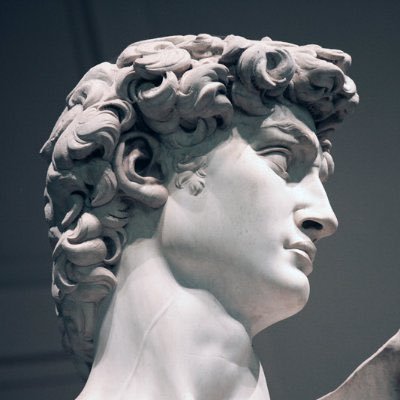“How Were Gothic Cathedrals Built?”

Originally published on Substack
Miracles of engineering and faith…

From pyramids to temples, many of the great works of ancient architecture were built for a similar purpose: as monuments to a single man.
But there’s something different about the great cathedrals of the Medieval era — instead of being ordered by a king, emperor, or pharaoh, they were projects of the common people. Cathedral building was a grassroots labor of love, not a work of slavery or pay.
But how on Earth did Medieval people build these intricate, colossal structures, all without power tools or modern machines?
Well, communities that built Gothic cathedrals had a few key elements that almost no other projects in history had at their disposal…
This weekend, I’m going deeper on one other thing medieval stonemasons had at their disposal: mathematics.
With only a compass, some string, a set square and a straightedge rule, master masons produced some of the most divine and harmonious structures ever seen.
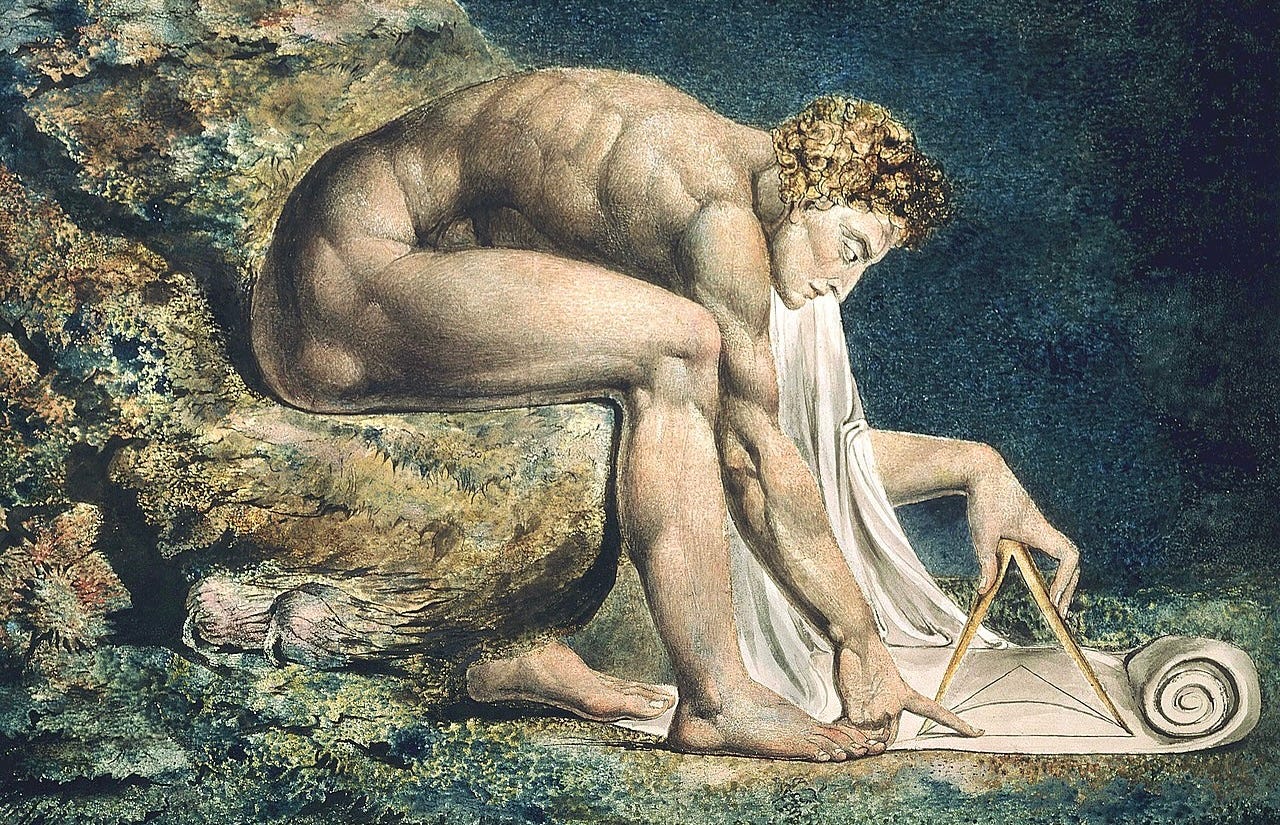
How Fibonacci, Pythagoras, and the Golden Ratio factor into the history of sacred architecture…
Join to get these Saturday deep-dives every week, and help support the mission.
The Power of Community
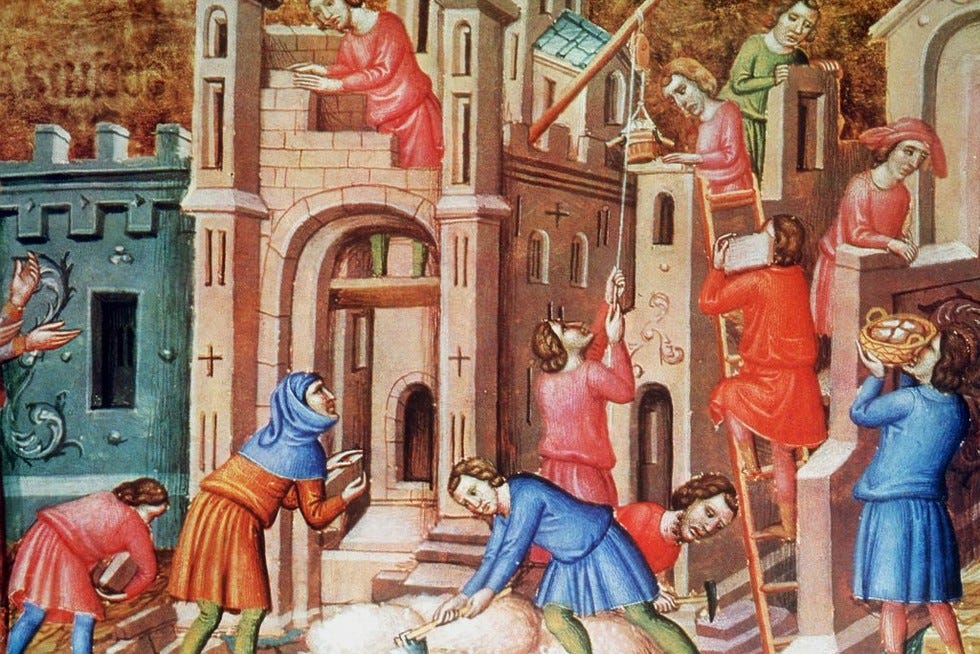
Roman emperors ordered new temples to commemorate their victories, their accomplishments, and their egos. Similarly, Egyptian Pharaohs commissioned pyramids to ensure their easy passage into the next world, and their undying memory in this one.
European cathedrals, however, had a different raison d’etre. Although they arose from feudal landscapes where large peasant populations were ruled by local lords, cathedrals were not built by the decree of any single ruler. Instead, they were the work of the whole community, and built to promote the spiritual flourishing of that community.
While the complexities of construction sites demanded a hierarchy of roles coordinated by a master architect, it was ordinary townspeople who provided much of the labor, and local craftsmen who created many of the cathedrals’ intricate details.
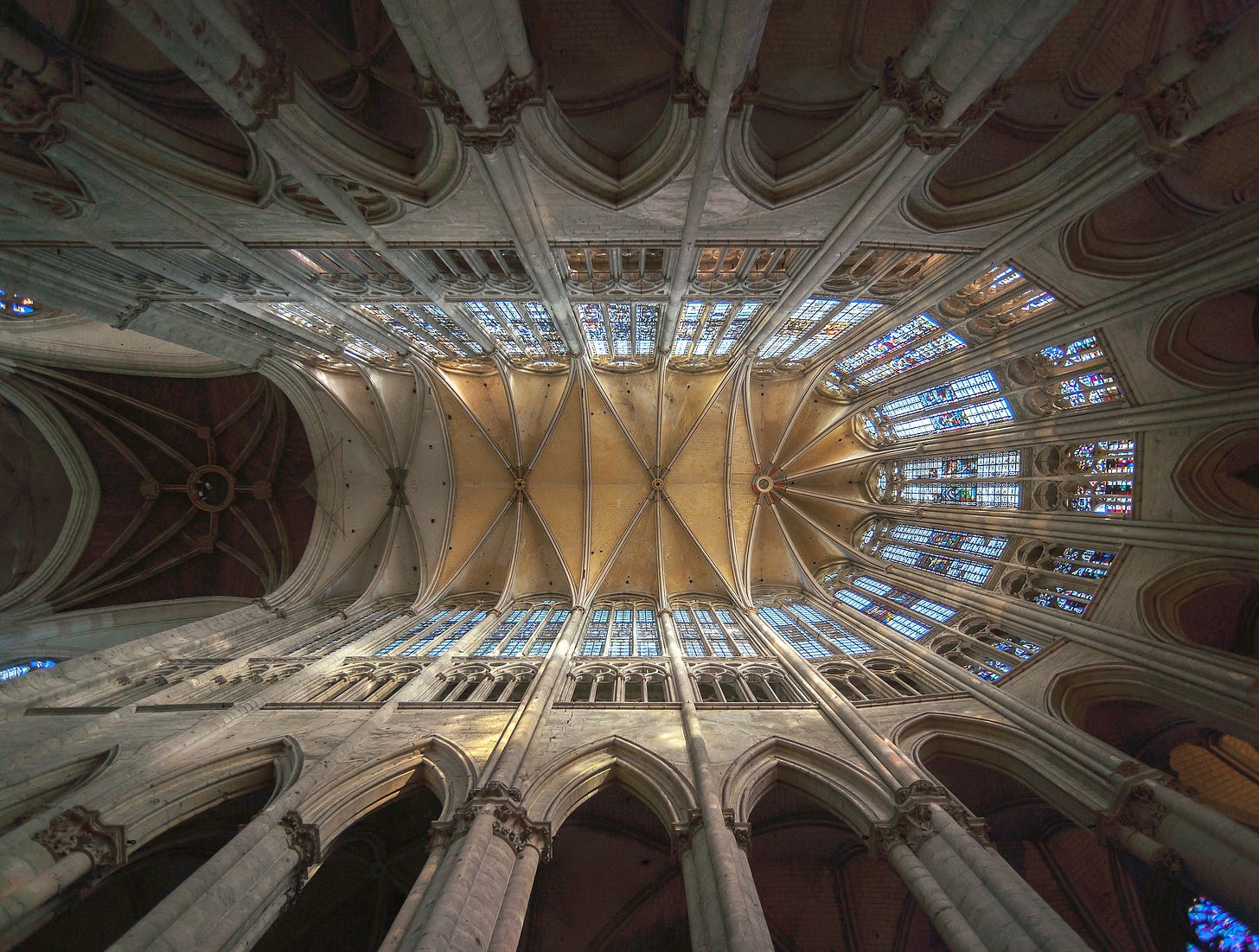
Not only did each town collaborate to construct these architectural marvels, but friendly competition — an aspect of healthy community — spurred each town on. For instance, when the city of Amiens in France completed its masterpiece cathedral, the city of Beauvais began to draw up plans for how to outdo it. Eventually, Beauvais stole Amiens’s title of the highest nave in Europe.
The unified will and vision of communities made it possible to build history-making wonders. In other words, while culture built communities, communities also built culture.
Innovation and Inspiration
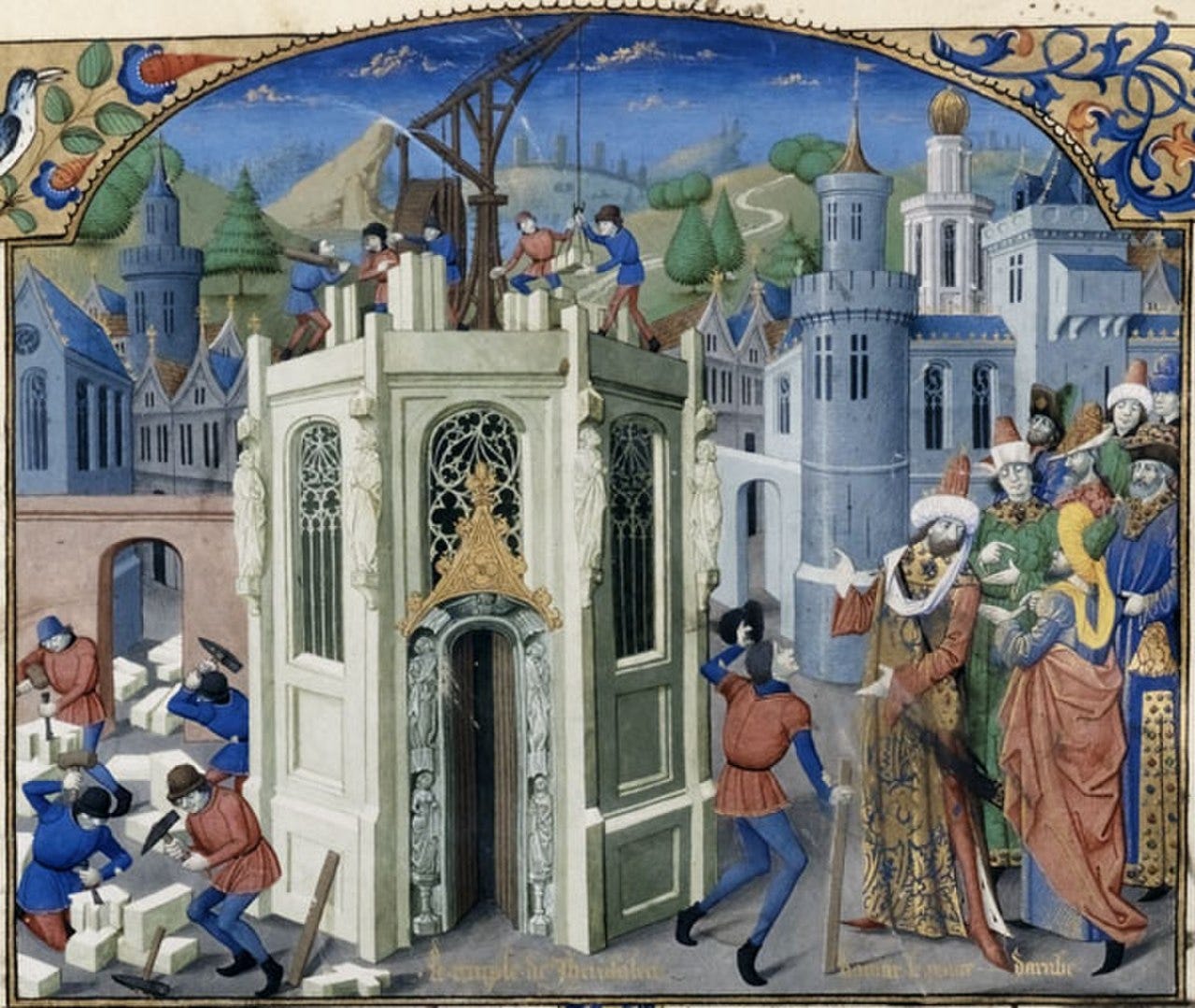
The Middle Ages saw the rediscovery of many Roman construction techniques, from pulleys capable of lifting stone blocks to arches that could support incredible amounts of weight.
European cathedral designers used these newly rediscovered technologies to inspire innovations like flying buttresses and pointed arches, as well as double pulleys and counterweights. In turn, these new building strategies allowed architects to build higher structures, thinner walls, and more windows than ever before.
Architects married these physical building advancements to metaphysical inspiration. For example, by combining their new building techniques with the belief that light was connected to the divine, architects created cathedrals with massive, intricately designed windows — walls of light held together by a mere spider web of stone.
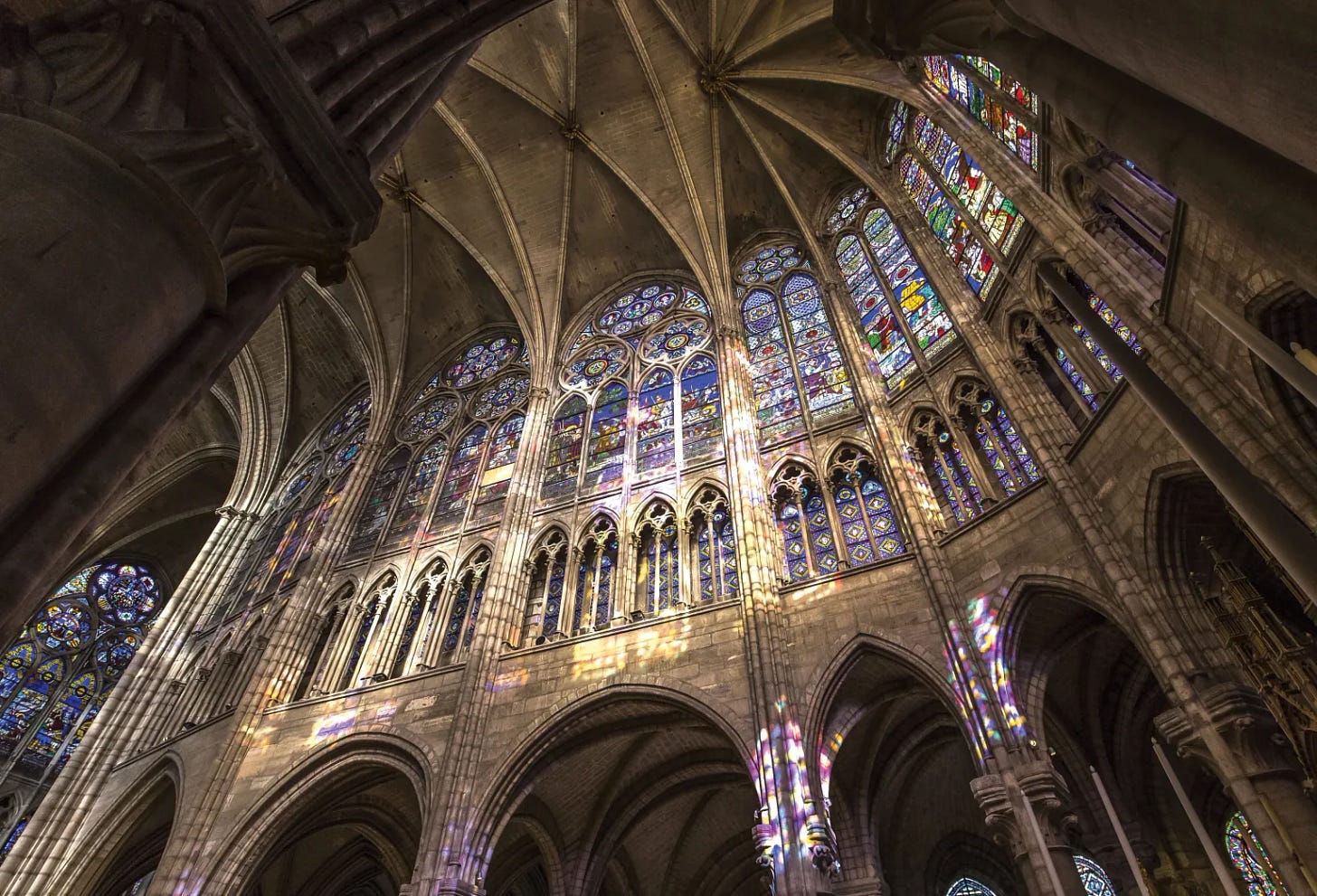
The explosion of cathedral-building also drove the development of new technologies. The Cistercian order of monks, for instance, gained expertise in metallurgy by building a swath of churches and religious houses across Europe. By relying on water-driven mills for power, they even developed a rudimentary form of hydraulic engineering that contributed to the development of landscapes across Europe.
Time and Tradition
Unlike projects such as the Egyptian Pyramids, which had to be finished within the lifetime of one pharaoh or else be abandoned, cathedral builders had time on their side.
Some, like Chartres Cathedral, took a brief 26 years to go up, while the great Cologne Cathedral’s final stone was laid 632 years after the first one.
Time was an essential ingredient in creating the massive, yet intricate, structures of cathedrals — but to make use of that time, communities had to stay faithful to the vision of those who came before. In many cases, this meant staying true to the vision of those from centuries earlier.
If nothing else, communities that built cathedrals were united across time. Imbued with the spirit of building something greater than themselves, men toiled their entire lives for what they would never live to see finished.
One wonders to what degree the same phenomenon occurs today…
Building Culture Brick by Brick
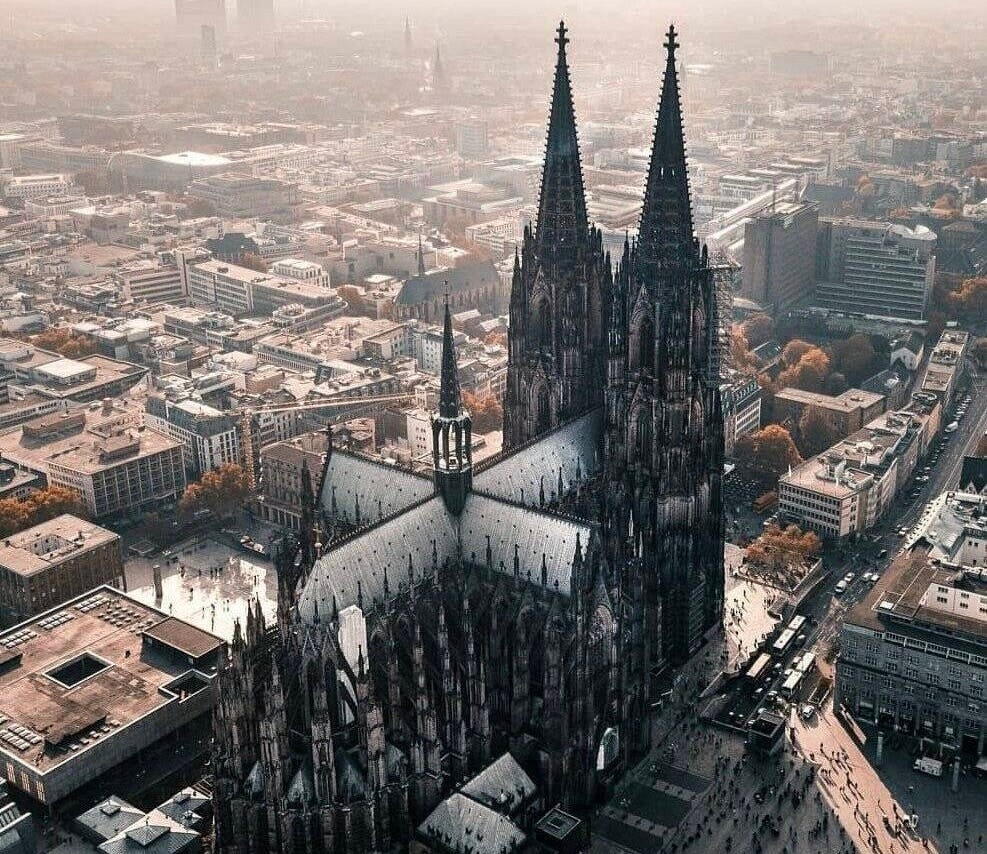
Cathedrals are a key example of what is possible when a community comes together with shared ideas, goals, aesthetics, and metaphysics — or in other words, when they unite around a shared culture.
A culture is formed when a group of people shares values and a way of life, and tradition is formed when successive generations choose to share the same. Cathedrals provide us with beautiful stone-and-glass monuments to what great culture and tradition can do.
When faced with the prospect of fracturing communities and the eroding of shared culture in the modern era, it’s often helpful to ask yourself: how can you be faithful to the vision of those who have gone before?
And most importantly, what investments can you make in the future — in projects that won’t come to fruition until long after you’re gone?
Art of the Week
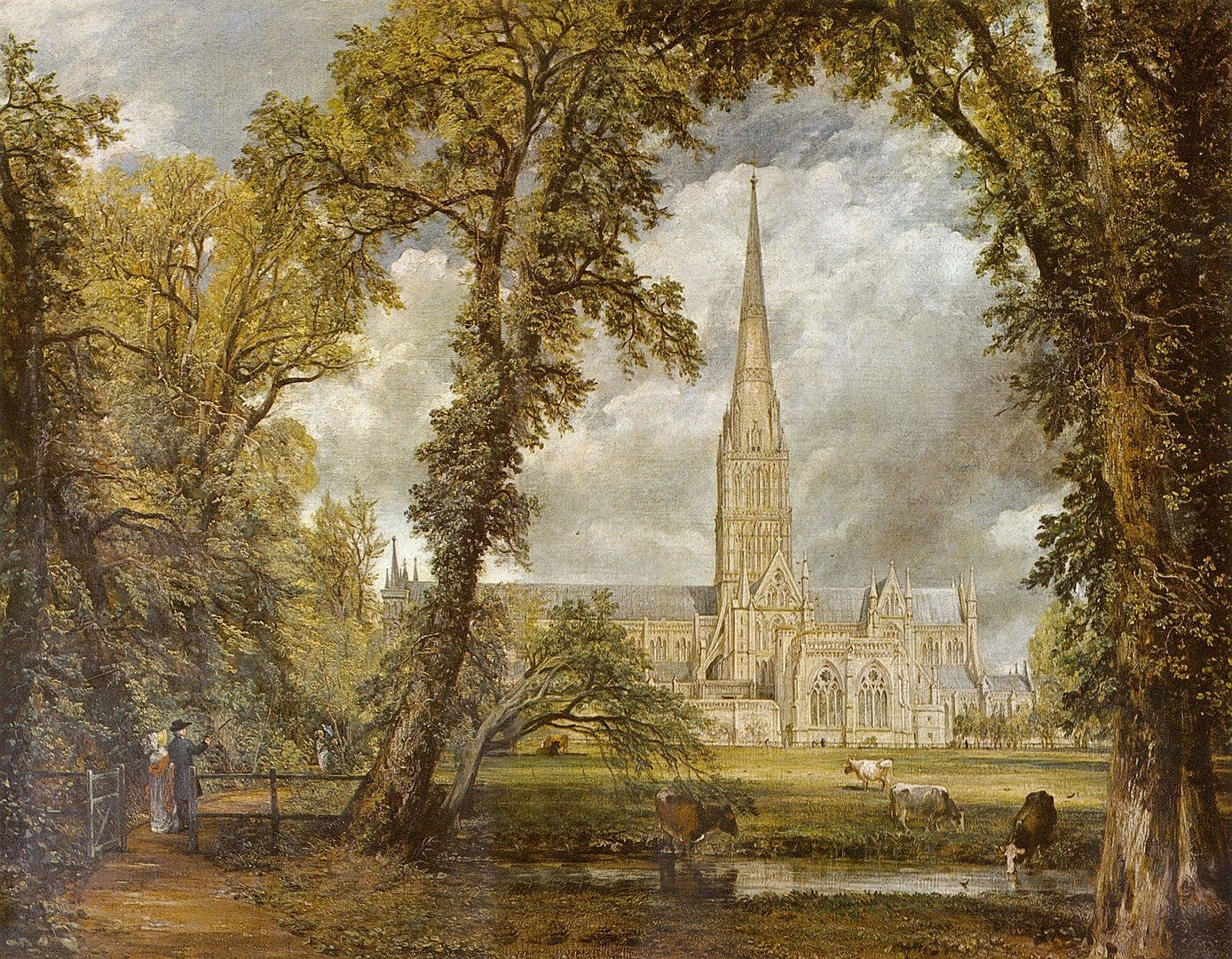
The 13th-century splendor of Salisbury Cathedral boasts the tallest spire in England, as well as the country’s oldest working clock — not to mention four original copies of the Magna Carta.
The Cathedral is a titan of English tradition, but to John Constable, England’s greatest landscape artist, it was far more than that. Salisbury was Constable’s haven of rest, and his paintings show the medieval church softened and humanized by pastoral landscapes, changing weather, and humble human figures.
Breathtaking tourist shots of great European cathedrals are a dime a dozen. But Constable’s paintings reveal that great architecture is more than an imposing remnant of a bygone era. It’s instead a living facet of culture — one which remains just as accessible to the modern-day visitor as it was to the lords and peasants who first knelt to pray within its soaring walls.
This weekend, I’m writing about the other thing medieval stonemasons had at their disposal: mathematics.

With only a compass, some string, a set square and a straightedge rule, master masons produced some of the most divine and harmonious structures ever seen.
Follow DailyClout on Rumble! https://rumble.com/user/DailyClout
Please Support Our Sponsors
The Wellness Company: https://dailyclouthealth.com
Use code DAILYCLOUT for 10% off!
NativePath: Collagen supplements help you replace what you stop producing — and the studies speak for themselves. Visit https://getnativepath.com/dailyclout for a MASSIVE 45% discount plus free shipping!
Order ‘The Pfizer Papers’ and Support Our Historic Work: https://www.skyhorsepublishing.com/9781648210372/the-pfizer-papers/
Discover LegiSector! Stay up-to-date on issues you care about with LegiSector’s state-of-the-art summarizing capabilities and customizable portals. No researchers needed, no lobbyists, no spin. Legislation at your fingertips! Learn more at https://www.legisector.com/




